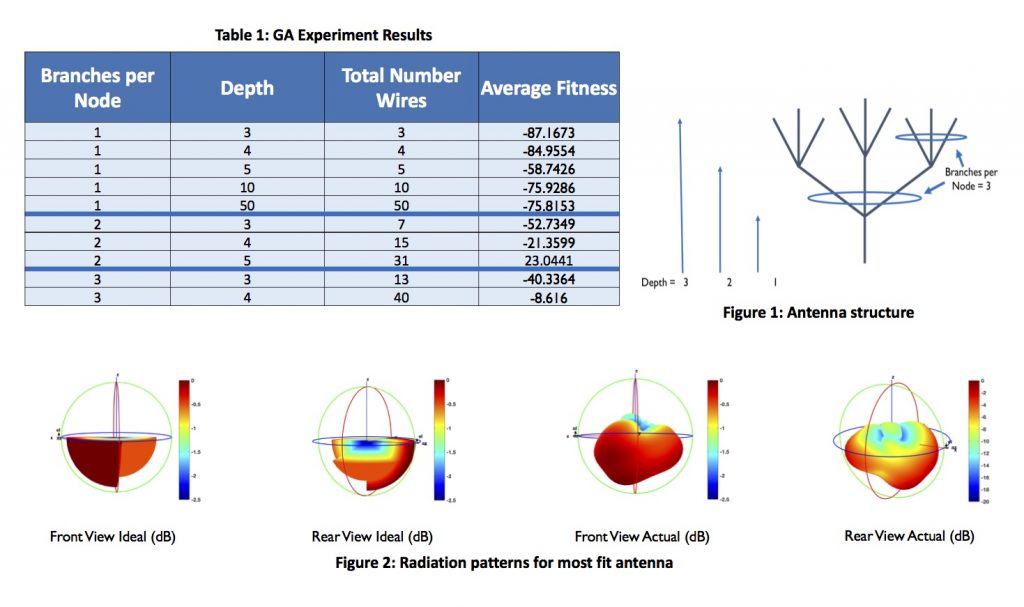By: James Smith, Michael Baginski
The goal of our research was to design antennas that broadcast electromagnetic energy in very specific, predefined regions. Signal strength topology may appear to be nearly pixilated and is typically impossible to realize using commonly available antennas. Highly directional antennas are very beneficial in tracking radars where maximum “power on target” is crucial for telecommunication systems trying to maximize coverage. Telecommunication systems and specifically cellular towers trying to focus the signal power in populated areas and eliminate coverage in unpopulated areas (city reservoirs, landfills, etc.) will greatly benefit from these antenna designs.
The optimization technique used in this research is called a genetic algorithm (GA). This technique mimics the biological processes of evolution, molding and shaping a “population” of wires over several generations to perform optimally in a specific task. Objects are optimized on their “fitness,” or how well the object performs compares to the ideal object. Two key advantages of a genetic algorithm are that it can search an infinitely large number of possible solutions and it can avoid local minima and maxima by introducing mutations.
The predecessor for this work was the “crooked wire antenna,” which can be imagined as a straight piece of wire arbitrarily bent many times to achieve a specific antenna power pattern [1]. The location and degree of the bends were determined by a GA that selects the antenna designs that best creates the desired pattern. Our research extends the “crooked wire antenna” design to achieve even better results using a type of “branching antenna” where the antenna wire configuration resembles the branch structure of a tree. A specially designed GA determines the length and placement of each of the wire branches. The key difference in this work from the “crooked wire antenna” is that each wire is allowed to branch out in arbitrary directions, similar to a tree.
To test our hypothesis, we ran trials of our developed genetic algorithm comparing branching versus non-branching antenna results for several test cases. Table 1 shows averaged fitness results of such a test case, using 10 trials per combination of branches per node and depth of antenna. The total number of wires for each antenna is a result of its branches per node and depth, as shown in Figure 1. This is presented in the results to show that branching wire antennas are not out-performing non-branching wire antennas by consisting of more total wires. Our most important finding was that the averaged fitness, a single value that represents how close the antenna is to the “ideal antenna” (with the more positive value being the better antenna), is much higher for antennas allowed to branch. Figure 2 shows the radiation patterns for the antenna giving the highest fitness in this experiment.
Future research will apply this technique to a practical problem, likely including further restraints. We plan to show that the multi-bend antenna can be used for cost-saving in industry.

Statement of Research Advisor:
This research is significant because, unlike its predecessor, all the conceptual designs are realizable using antenna branching that reduces the load bearing of the individual antenna member . These findings will be transformative to any field needing unique antenna radiation—Michael Baginski, Electrical and Computer Engineering
Last Modified: